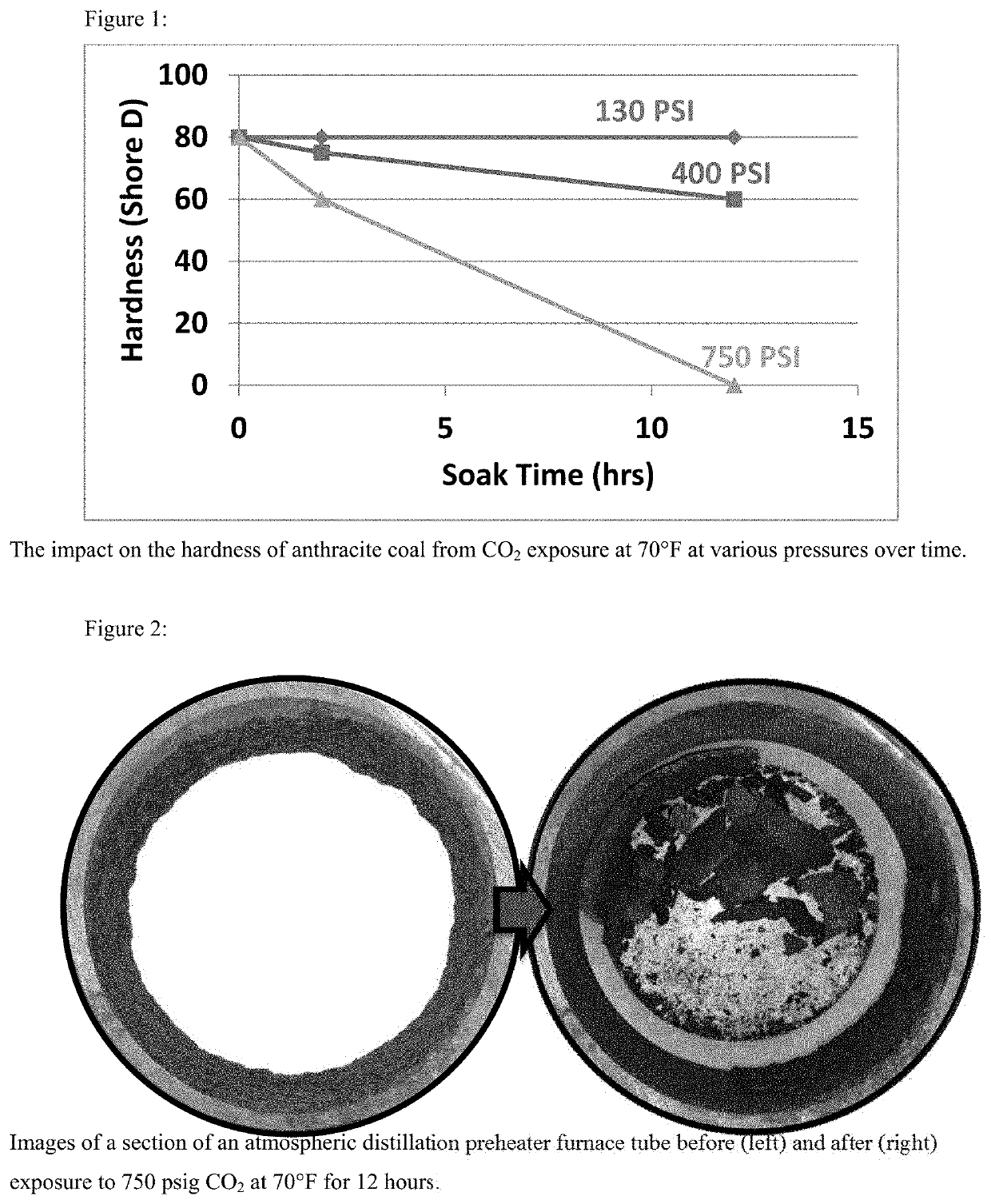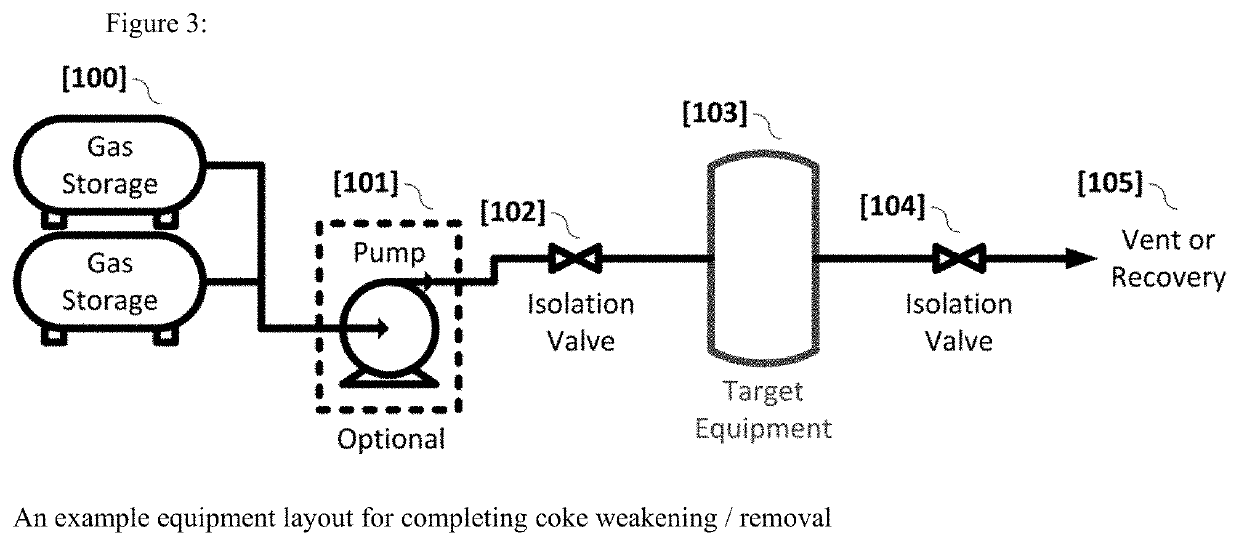Method for weakening and removing coke and carbonaceous deposits
a carbonaceous and coke technology, applied in the direction of cleaning hollow objects, lighting and heating apparatuses, thermal non-catalytic cracking, etc., can solve the problems of increasing the cost of operation both in pumping and heating, affecting the operation efficiency of equipment utilized in petroleum refining, and requiring routine maintenance. , to achieve the effect of reducing the risk of failure, and reducing the cost of operation
- Summary
- Abstract
- Description
- Claims
- Application Information
AI Technical Summary
Benefits of technology
Problems solved by technology
Method used
Image
Examples
Embodiment Construction
[0033]The present invention concerns a method for weakening and removal of carbonaceous material and coke inclusive of a two-step process of pressurization followed by depressurization. The process can be repeated as necessary in order to maximize the result.
[0034]The system / equipment must be able to hold gas at a pressure substantially higher than ambient pressure. This may necessitate the installation of pressure isolation valving or various ports capped and plugged in order to retain the integrity of the treatment gas within the target system. The system is then filled with the treatment gas at pressures ranging from about 50 to 5,000 psi, and may be either isolated or continually attached to the treatment gas source in order to maintain system pressure as the gas is sorbed into the coke deposits. After a set period of time, the treatment gas is released, and a subsequent flow of gas or liquid may be used to remove any deposits that have become dislodged from the wall.
[0035]An ex...
PUM
 Login to View More
Login to View More Abstract
Description
Claims
Application Information
 Login to View More
Login to View More - R&D
- Intellectual Property
- Life Sciences
- Materials
- Tech Scout
- Unparalleled Data Quality
- Higher Quality Content
- 60% Fewer Hallucinations
Browse by: Latest US Patents, China's latest patents, Technical Efficacy Thesaurus, Application Domain, Technology Topic, Popular Technical Reports.
© 2025 PatSnap. All rights reserved.Legal|Privacy policy|Modern Slavery Act Transparency Statement|Sitemap|About US| Contact US: help@patsnap.com


